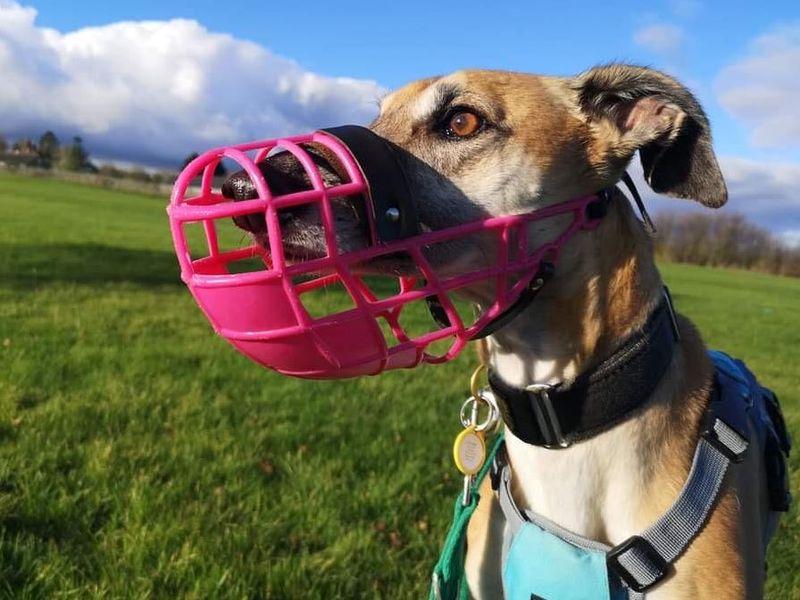Muzzle Training Your Dog: A Guide to Safety and Comfort
In a world where our furry companions often accompany us on adventures, the idea of dog muzzles may conjure images of aggressive or unruly pets. However, muzzle training can be an invaluable skill for any dog owner, fostering safety not just for the dog, but for others in their environment as well. Far from being a punitive measure, muzzle training, when approached thoughtfully, serves as a gentle introduction to an essential tool that promotes peace of mind during walks, visits to the vet, and encounters with new experiences. In this article, we will explore the art of muzzle training, addressing common misconceptions, providing practical tips, and highlighting the benefits of this often misunderstood practice. Whether you’re preparing your pup for their first muzzle fitting or looking to refine their comfort with this accessory, our guide will equip you with the knowledge to ensure that this training journey is positive and rewarding for both you and your canine companion.
Table of Contents
- Understanding the Importance of Muzzle Training for Safety and Well-Being
- Choosing the Right Muzzle: A Guide to Types and Appropriate Sizing
- Step-by-Step Techniques for Positive Muzzle Introduction
- Troubleshooting Common Challenges in Muzzle Training
- Q&A
- Concluding Remarks
Understanding the Importance of Muzzle Training for Safety and Well-Being
Muzzle training is an essential practice that not only enhances safety for your dog but also for those around them. By teaching your canine companion to accept a muzzle, you are equipping them with a critical tool that can prevent accidents during stressful situations such as veterinary visits, grooming, or encounters with unfamiliar dogs. A properly fitted muzzle allows your dog to explore the world safely while minimizing risks, promoting a calm environment in potentially overwhelming scenarios. This training fosters a sense of trust between you and your pet, as they become accustomed to the muzzle being associated with positive experiences rather than fear.
Moreover, muzzle training can significantly contribute to your dog’s overall well-being. It helps ease anxieties related to social interactions, reduces the likelihood of biting incidents, and provides peace of mind for pet owners. Here are some essential benefits of muzzle training:
- Enhanced safety: Reduces the risk of bites during stressful circumstances.
- Increased socialization: Facilitates safe interactions with other dogs and people.
- Better vet visits: Eases tension during examinations and treatments.
When you introduce a muzzle to your dog, make sure to choose a comfortable style that allows for panting and drinking while preventing biting. Consistent and positive reinforcement during the training process will help your pet become more accepting of the muzzle, turning it into a tool for comfort and safety rather than a sign of restriction.
Choosing the Right Muzzle: A Guide to Types and Appropriate Sizing
When it comes to muzzle training your dog, selecting the right muzzle is crucial for both comfort and safety. Different types of muzzles serve various purposes and it’s essential to match the type with your dog’s needs. Consider the following types:
- Basket Muzzle: Ideal for larger breeds; allows for panting and drinking.
- Soft Muzzle: Provides limited movement; suitable for short-term use during vet visits.
- Head Muzzle: Best for small dogs; ensures a snug fit while minimizing escape risks.
Proper sizing is equally important as a well-fitted muzzle ensures safety and effectiveness. To achieve the best fit, measure your dog’s snout length and circumference. Here’s a simple guide:
| Dog Size | Snout Length (inches) | Snout Circumference (inches) |
|---|---|---|
| Small | 3-4 | 5-7 |
| Medium | 5-6 | 8-10 |
| Large | 7-9 | 11-13 |
| X-Large | 10-12 | 14-16 |
Step-by-Step Techniques for Positive Muzzle Introduction
Introducing a muzzle to your dog should be a gradual and positive experience, ensuring they associate the muzzle with comfort and safety. Start by allowing your dog to explore the muzzle on their own for a few moments. Place it on the ground and let them sniff it, giving them treats for showing interest. You can also enhance this step by:
- Using treats: Reward your dog every time they approach the muzzle.
- Encouraging curiosity: Create a game where they find the muzzle among their toys.
- Adding familiar scents: Rubbing the muzzle with a treat or their favorite toy can make it more appealing.
Once your dog is comfortable with the muzzle’s presence, it’s time to start the actual fitting. Gently hold the muzzle in front of your dog’s face and reward them for staying calm. Gradually slide the muzzle over their nose, but don’t fasten it just yet. To ease your dog into it, try the following methods:
- Short sessions: Keep the initial fitting sessions brief and gradually increase the duration.
- Positive reinforcement: Continuously reward them with praise and treats during and after each trial.
- Use a calm voice: Speak soothingly to reassure your dog at every step of the process.
Troubleshooting Common Challenges in Muzzle Training
Muzzle training can be a challenging yet essential aspect of ensuring a dog’s safety and comfort. One common issue is the dog’s resistance to wearing the muzzle. This can stem from a variety of factors, including lack of familiarity or a negative association with the muzzle. To address this, try the following strategies:
- Positive Reinforcement: Reward your dog with treats and praise when they show interest in the muzzle, even if it’s just sniffing it.
- Gradual Introduction: Start by allowing your dog to see and explore the muzzle without forcing it onto their face. Over time, gently slip it on for short periods while providing treats.
- Explore Options: Different types of muzzles fit different dogs. Consult with professionals to choose one that is comfortable and suitable for your dog’s needs.
Another common challenge is the dog’s overreaction once the muzzle is on. Some dogs may panic or try to remove it. To mitigate this behavior, consider the following tips:
- Desensitization: Gradually increasing the time your dog wears the muzzle can help them become accustomed to the feeling.
- Controlled Environment: Practice wearing the muzzle in low-stress environments first before exposing your dog to more stimulating situations.
- Distraction Techniques: Use toys or favorite activities to keep your dog engaged while they wear the muzzle, ensuring a positive association.
Q&A
Q&A: Muzzle Training Your Dog – Understanding the Process
Q1: What is muzzle training and why is it important?
A: Muzzle training involves acclimating your dog to wearing a muzzle in a positive and stress-free way. It’s important because it can keep your dog and others safe in situations where they may feel threatened, anxious, or aggressive. A muzzle can also be a valuable tool during vet visits or grooming sessions to prevent bites, ensuring a safer experience for everyone involved.
Q2: Is it safe to use a muzzle on my dog?
A: Yes, using a muzzle is safe when done correctly. It’s crucial to choose the right type of muzzle for your dog and to ensure it fits properly. A well-fitted muzzle allows your dog to breathe comfortably, pant, and drink water. The goal of muzzle training is to help your dog feel comfortable wearing one, so it should never be used as a form of punishment or means to restrict communication.
Q3: What types of muzzles are available, and how do I choose the right one?
A: There are several types of muzzles, including basket muzzles, fabric muzzles, and life-preserving muzzles. Basket muzzles are typically the most versatile, allowing dogs to open their mouths to pant and drink. When selecting a muzzle, consider your dog’s breed, size, and specific needs. Ensuring a good fit is essential for both comfort and effectiveness.
Q4: How can I effectively train my dog to accept a muzzle?
A: Muzzle training should be a gradual process. Start by letting your dog explore the muzzle while providing treats and praise, so they associate it with positive experiences. Next, you can introduce the muzzle for short periods, rewarding your dog for wearing it. Gradually increase the duration while keeping things positive. Patience is key – never force the muzzle onto your dog, as that can create fear or resistance.
Q5: What are some common mistakes to avoid during muzzle training?
A: Common mistakes include rushing the process, using the muzzle as punishment, or choosing a poorly fitting muzzle. It’s essential to remain calm and positive during training, as your dog’s emotional state can greatly affect their acceptance of the muzzle. Always monitor your dog’s body language and break training sessions into short, manageable periods.
Q6: How can I tell if my dog is comfortable wearing a muzzle?
A: Signs of comfort include a relaxed body posture, a wagging tail, and a willingness to move around while wearing the muzzle. If your dog is consistently pulling away, whining, or showing signs of stress (e.g., panting heavily, drooling excessively), they may need more time or a different approach to adapt to the muzzle.
Q7: Can muzzle training help with behavioral issues?
A: Muzzle training can be a part of a comprehensive behavior modification plan, especially if your dog has issues with aggression or fear. It provides a safety net during training sessions, allowing you to work on these behaviors with less worry about potential biting. However, it’s essential that muzzle training is coupled with positive reinforcement techniques and possibly guided by a professional dog trainer or behaviorist.
Q8: How long does it take to train a dog to wear a muzzle?
A: The timeline can vary widely based on your dog’s temperament and previous experiences. Some dogs may accept a muzzle within a few sessions, while others may take weeks. The key is to be patient, ensure that each training session is positive, and never rush the process. Celebrate small victories along the way!
Q9: Is muzzle training only for aggressive dogs?
A: No, muzzle training is not solely for aggressive dogs. Many dogs may benefit from it due to anxiety, past trauma, or simply as a precaution during stressful situations like vet visits or public outings. Muzzle training can help any dog feel more secure in various environments.
Q10: Where can I find more resources for muzzle training my dog?
A: Numerous books, online courses, and videos provide guidance on muzzle training. Consider reaching out to local veterinarians, dog trainers, or behaviorists for personalized advice. Online communities and forums can also be valuable resources where you can share experiences and gain insights from fellow dog owners.
Concluding Remarks
As we conclude our exploration of muzzle training for dogs, it’s essential to remember that this practice is rooted in building trust, safety, and positive experiences for both you and your furry companion. Embracing a muzzle as a tool for training can transform it from a source of anxiety into a symbol of comfort and security. Whether your goal is to prepare your dog for visits to the vet, groomer, or simply to enhance their social skills with other pets and people, patience and consistency are key.
Ultimately, muzzle training isn’t just about the muzzle itself; it’s about nurturing a deeper bond with your dog, ensuring their well-being, and providing them with the skills they need to navigate the world confidently. By incorporating gentle techniques and reward-based training methods, you’ll both walk this path together, turning each training session into an opportunity for growth and connection. So, equip yourself with knowledge, stay patient, and watch as your dog’s confidence flourishes, proving that with the right approach, a muzzle can become a gateway to new adventures.



